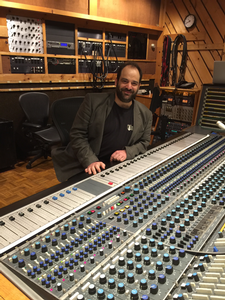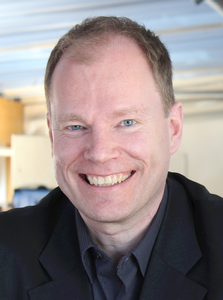AES New York 2019
Acoustics & Psychoacoustics Session Details
Wednesday, October 16, 4:45 pm — 5:45 pm (1E12)
AP01 - New Developments In Acoustic Simulation: Reflections On Year One In An Acoustic Lab (Predicting Audio Accuracy With Algorithms & Virtual Reality)
Presenters:Renato Cipriano, Walters Storyk Design Group - Belo Horizonte, Brazil
Peter D'Antonio, Walters Storyk Design Group
Dirk Noy, WSDG - Basel, Switzerland
In 2018 prototype Acoustic Lab listening rooms were constructed in WSDG offices in Basel, Switzerland, Berlin, Germany, and Highland, NY. Over the past eighteen months projected acoustic properties of a series of diverse environments ranging from a sports stadium to theaters, classrooms, a railway terminal, and a sophisticated high end listening room were among those simulated in these Labs. This tutorial will review the evolution of methodology for developing accurate audio and 3D VR room modeling simulations of pre-construction acoustic properties. Programs include audio and visual simulations illustrating various acoustic options resulting from the engagement of a variety of acoustic treatments and speaker placement configurations. New developments in software, client response and completed projects will be discussed.
Thursday, October 17, 9:00 am — 10:00 am (1E08)
AP02 - Optical/Fiber Optic Microphone: When and Why should I Consider Using an Optical Microphone?
Presenters:Ronald Ajemian, Owl Fiber Optics - Flushing, NY, USA
Yuvi Kahana, Optoacoustics - Israel
Moshav Mazor, Israel
A brief history of the Optical/Fiber Optic Microphone will be discussed with descriptions and uses in audio related fields for picking up sounds in pro and non-pro audio applications. Dr. Yuvi Kahana obtained his Ph.D. in numerical acoustics from ISVR, Southhampton, UK and is CEO of Optoacoustics. Dr. Kahana has over 20 years eperience as he leads technology development and patent registration of optical microphone technology, while creating new innovative products in new markets. He will present the current and related applications of this amazing breakthrough for recording sound compared to conventional electroacoustic transducer types of microphones. A Questions and Answers period will be taken after the discussion.
 | This session is presented in association with the AES Technical Committee on Fiber Optics for Audio |
Thursday, October 17, 1:00 pm — 1:45 pm (1E12)
AP03 - Shame on Us: Phase Is Not Polarity!
Presenter:Cesar Lamschtein, Kaps Audio Production Services - Montevideo, Uruguay; Mixymaster - Montevideo, Uruguay
Being disappointed with the industry regarding how messy the concepts of PHASE and POLARITY get to students, general amateur audio enthusiasts and even seasoned professionals. I think that AES is to the only one that can and SHOULD do something to encourage the stopping of the practice of freely exchanging these terms.
E.g, • major console brands, either analog and digital in either plain word or the ø symbol; • Daw software (nuendo, reaper, etc.); • outboard equipment (including such classics as 1073 neve eq); • videos (Allan Parsons MTCS DVD); • books.
During this presentation I will: • Acknowledge the situation: I´ll show the results of a survey done on the 2 past NY conventions, where 100% of the polarity switches in the exhibition floor was reviewed and photographed, showing inconsistency in the naming of the switch even in different products from the same manufacturer; • Teach terms: I´ll state actual definitions and clarify the concepts of phase and polarity with audio examples of each; • Encourage the discussion: I want to gather people together to nourish this venture, discussing possible abbreviation and symbol (ICON) to represent polarity in order to gather information that may lead to an AES TD; • I´ll invite fellow audio men and women to speak properly about those important concepts (and THEN be able to think properly about this quite basic concepts, albeit misunderstood).
Thursday, October 17, 4:30 pm — 5:30 pm (1E13)
AP04 - Circles of Confusion
Chair:Thomas Lund, Genelec Oy - Iisalmi, Finland
Panelists:
Sean Olive, Harman International - Northridge, CA, USA
Susan Rogers, Berklee College of Music - Boston, MA, USA
Circles of confusion in pro audio are replacing technical limitations with cognitive limitations. Without proper anchoring of spectral balance and level, drifting over time is foreseeable in self-referenced systems, thereby putting legacy recordings at the risk of sounding dated for no good reason.
The panel will discuss monitoring requirements that stand the test of time, recent studies on active sensing, between listener variation and “slow listening”; and a possible revision of ITU-R BS.1116. The topics are addressed from a more practical perspective in Friday’s AP06 session.
Friday, October 18, 10:30 am — 11:30 am (1E13)
AP05 - How to Organize Unbiased PA/SR Shoot-Outs
Moderator:Eddy Bøgh Brixen, EBB-consult - Smørum, Denmark; DPA Microphones - Allerød, Denmark
Presenters:
Gil Eva Craig, Western Audio Engineering Ltd. - Wellington, New Zealand; Auckland
Malle Kaas, Women in Live Music - Europe
Bob McCarthy, Meyer Sound - New York, NY, USA
Scott Sugden, L-Acoustics - Oxnard, CA, USA
It is very common to arrange for comparisons of PA systems. However, often these comparisons are organized in a way leaving procedures less transparent and results rather unclear. Standards for the assessment of loudspeakers do exist. The assessors basically must be trained for the purpose, and the set-up should support double-blind testing. However, in the test of big systems, the listening panel is not necessarily trained and the practical problems of rigging huge arrays to some degree may weaken the procedures and the results. This workshop seeks to provide good advice from experts in the field. Further, it reports the experience from double blind testing that solved most of the problems in connection with a session testing five line arrays.
 | This session is presented in association with the AES Technical Committee on Acoustics and Sound Reinforcement |
Friday, October 18, 1:15 pm — 2:15 pm (1E12)
AP06 - Circles of Excellence
Moderator:Thomas Lund, Genelec Oy - Iisalmi, Finland
Panelists:
Florian Camerer, ORF - Austrian TV - Vienna, Austria; EBU - European Broadcasting Union
Bob Katz, Digital Domain Mastering - Orlando, FL, USA
George Massenburg, Schulich School of Music, McGill University - Montreal, Quebec, Canada; Centre for Interdisciplinary Research in Music Media and Technology (CIRMMT) - Montreal, Quebec, Canada
30.000 year old cave paintings are among human beings' most impressive cultural heritage, while we are unable to experience how music by great composers sounded just 300 years ago.
The experts on the panel will try to separate the facts from the myths surrounding recording, monitoring and reproduction, and explain which of the elements they have found most essential in their work to make it stand the test of time. The panel is a continuation of the more theoretical AP04 discussion on Thursday.
Friday, October 18, 3:00 pm — 4:00 pm (1E13)
AP07 - Digital Filters, Filter Banks and Their Design for Audio Applications - With Python Examples
Presenter:Gerald Schuller, Ilmenau University of Technology - IImenau, Germany; Fraunhofer Institute for Digital Media technology (IDMT) - Ilmenau, Germany
This tutorial will teach how to design "Finite Impulse Response" and "Infinite Impulse Response" filters for audio applications, in theory and practice, and will give examples in the popular Open Source programming language Python. Then it will go on to show how to design and use filter banks. Examples will be the "Modified Discrete Cosine Transform" (MDCT) filter bank, the (Integer-to-Integer) "IntMDCT," and Low Delay filter banks, which are widely used in MPEG audio coding standards. Further it will show digital filters as predictors for predictive coding, with applications in MPEG Lossless coding standards. Finally it will show how to implement filter banks as convolutional neural networks, which makes them "trainable" and eases the use of GPU's. This has applications for instance in audio source separation.
 | This session is presented in association with the AES Technical Committee on Coding of Audio Signals |
Friday, October 18, 4:45 pm — 5:45 pm (1E08)
AP08 - Listening Tests - Understanding the Basic Concepts
Presenter:Jan Berg, Luleå University of Technology - Piteå, Sweden
Listening tests are important tools for audio professionals as they assist our understanding of audio quality. There are numerous examples of tests, either formally recommended and widely used or specially devised for a single occasion. In order to understand listening tests and related methods, and also to potentially design and fully benefit from their results, some basic knowledge is required. This tutorial aims to address audio professionals without prior knowledge of listening test design and evaluation. The fundamentals of what to ask for, how to do it, whom to engage as listeners, what sort of results that may be expected, and similar issues will be covered.
 | This session is presented in association with the AES Technical Committee on Perception and Subjective Evaluation of Audio Signals |
Saturday, October 19, 9:00 am — 10:00 am (1E07)
AP09 - To PEAQ or Not to PEAQ? - BS.1387 Revisited
Presenters:Pablo Delgado, International Audio Laboratories Erlangen - Erlangen, Germany; Fraunhofer Institute for Integrated Circuits IIS - Erlangen, Germany
Thomas Sporer, Fraunhofer Institute for Digital Media Technology IDMT - Ilmenau, Germany
Carefully conducted listening tests are time consuming and expensive. Computerized, objective measurement schemes for the assessment of perceived audio quality seem to be an adequate replacement. The Recommendation ITU-R BS.1387 (PEAQ) is a standardized method to assess bit-reduced audio signals However in the last 20 years both audio coding and listening methods have evolved. In addition many authors use PEAQ for assessment of audio processing scheme not known and validated in 1998.
This tutorial will consist of the following parts: • explain what PEAQ is, how it was designed and validated; • show some examples where PEAQ fails to predict perceived quality; • summarizes the work since the standardization concerning newer audio coding tools, spatial audio and listening procedures; • gives an outlook of further developments; • give advice under which circumstance the current version of PEAQ should be used.
 | This session is presented in association with the AES Technical Committee on Perception and Subjective Evaluation of Audio Signals |


